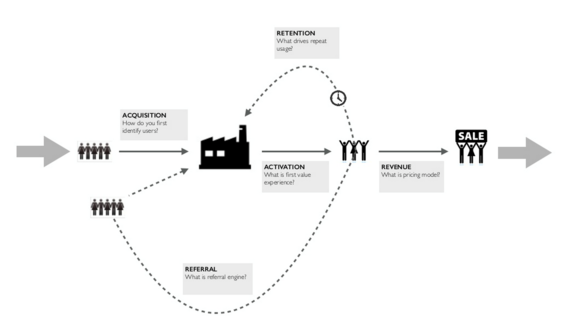
This post was co-authored by Brian Moelich
Before innovation even starts, corporate alarms are ringing and walls are raised.
In the post-recession economy, markets are changing faster than the mighty corporations of old can keep up with. To combat the epidemic of nimble startups, corporations are advocating fresh thinking such as prototyping, failing fast and quick iterations based on customer feedback.
But few, if any, corporations have been able to point to any concrete successes, no matter the size. Why is that?
Large organizations are always going to be risk averse.
A publicly-traded corporation must not only appease shareholders but also Wall Street analysts, and the corporation's executives that hold the purse strings are rated predominantly on financial performance.
New ideas within corporations don't always achieve short-term profitability, and thus it is difficult to convince decision-makers to reallocate capital from an existing cash cow to an "ugly duckling" innovation project. Corporate resources will inevitably go towards incremental established brand innovations and not inherently risky disruptive new market innovations.
Remember that it was Kodak who invented the first digital camera, and chose to continue investing in film R&D over a risky new venture. Everyone knows how that story ended.
Play into the risk-averse nature of large corporations.
For a corporate innovation project to succeed, it is necessary to recognize that the executive investing in the innovation project has corporate strategic goals to uphold.
The key for the innovation project's success then becomes to fit into the corporation's strategic goals. The following are some key factors to encourage this outcome:
1. Find out what keeps executives up at night. There are two approaches that corporations have found successful: 1) use executive problems for innovation challenges, and 2) tie the innovation project to or search out projects that match an executive challenge.
EMC and Deloitte have been very successful at taking executive challenges and posing them to the corporation as an innovation challenge, for which employees can submit ideas. Success is derived from the fact that executive buy-in is built in from the onset, because the ideas are directly tied to the executive's imperatives.
The Citrix Startup Accelerator's Innovator's Program and recent Citrix hackathons have engaged with executive sponsors prior to kickoff and used their input on challenges as selection criteria. Much like the first approach, executive buy-in is assured as teams enter the program with ideas that match executive needs.
2. Develop a monetization roadmap. -- Innovation projects attain a quick death due to a rapid demand for monetization. In some instances this is possible, but for most, a user base needs to be established before the market is willing to pay.
Ash Maurya is beginning to popularize a framework that calls attention to attaining users prior to revenue.

Image credit: Ash Maurya
This model is helpful because it addresses the challenge of organizations understanding the needs of startup marketing versus established brand marketing. Additionally, the framework helps innovation project teams outline what their plans are to eventually reach revenue.
The push to monetization can also be prevented by demonstrating how the innovation project brings other forms of value to the corporation, such as accessing a new user base to cross-sell existing brands.
3. Gauge executive buy-in throughout the process. Using executive buy-in as a gate to pivot, persevere or kill is critical, because without buy-in, the project is already dead on arrival.
The corporate innovation process should have gates where certain criteria should be met before moving on. At each of these gates, executive input must be acquired and should be used as a determining factor as to whether the gate is achieved.
It is also helpful to prime executives with what are the criteria and stages of the innovation process so that they are aware of how to judge and assess the innovation project. Otherwise, the executive might have a higher expectation based on traditional corporate outcomes than what could reasonably be expected of an innovation project.
4. Speak the language of the executive. Not only do innovators need to have vision, they need to be able to explain it in the C-suite's language.
Entrepreneurs are quick to state that startups are liberating versus a stifling corporate culture, but the reality is that even entrepreneurs are beholden to others. Entrepreneurs are bound to their investors, while corporate innovators are indebted to their executives. Both need to translate their vision into a language that their stakeholder understands.
That language is one based on quantitative factors. For investors, the considerations are traction, growth and revenue. For executives, the elements are cost, payback period and top line revenue growth.
5. Get line function buy-in. It isn't only the C-suite that needs to be convinced but also the "doers."
As much as the C-suite needs to be brought into the conversation, the other critical component is the "doers:" mid-level management. Without convincing the "doers" of the project's necessity, these managers will continue to throw up barriers that will eventually kill innovation within the corporation.
6. Be selective. Take baby steps. Dreaming is great, but taking actionable baby steps is better.
Corporate innovators are great at envisioning future states, but often fail to concretely translate their vision into beneficial steps. In other words, corporate innovators tend to be perceived as dreamers, rather than doers, which relegates their concepts to the bottom of the corporate priority list.
Overcome this perception by ensuring that the initial ask is not only actionable, but also achievable in the short term. Present small projects in the language of the C-suite and deliver on them to build the groundwork for the grander vision.
Corporate innovation requires an understanding of the organization's needs.
Innovation within a corporation requires a recognition that the corporation is inherently risk averse and the only way to push innovation through is to accept and appease it. Every move and decision a successful corporate innovator makes is based on directly reducing this risk or taking steps to bypass risk by addressing corporate challenges head-on.
Brian Moelich is an innovation strategist, entrepreneur and educator. He is a business designer for Citrix Systems in Silicon Valley, where he co-manages an internal innovation incubator and is also a mentor for the Citrix Startup Accelerator. In a past life, he was a physical security consultant to IBM in Canada.
MORE ON HUFFPOST:
